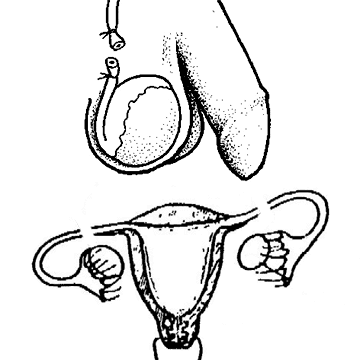
Sterilisation
Increasingly often, sterilisation of men or women is being employed as a contraception method as soon as family planning is complete.
The patient must be at least 25 years of age, and there may not be any legal hindrances involved. While some doctors and/or hospitals require that the patient be older and have a certain number of children, such rules are arbitrary and not anchored in law. Demanding the approval of the husband or wife has no legal basis either.
Women: severing and sealing the Fallopian tubes (tubal ligation) blocks the path along which the sperm cells travel to the egg cells, making fertilisation impossible. The operation, performed under general anaesthesia, employs laparoscopy (one to three small incisions are made in the abdomen or pelvis), and both Fallopian tubes are either cut (coagulation) or closed off (clips). The procedure is performed on an outpatient basis.
In contrast, severing a man’s sperm duct (vasectomy) is a minor procedure with local anaesthesia that requires approximately 15 minutes. Complications are extremely rare.
This method, quick and uncomplicated, is permanent and can be reversed in solely a very few cases. Neither sexuality nor bodily function are affected, regardless of sex.
In a partnership, both members should carefully consider the question of who is sterilised. While vasectomies are simpler and involve less risk, the person who undergoes sterilisation is the only one protected outside the current relationship.
In Austria, health-insurance companies pay for this procedure only when it is made necessary by a medical condition.
 Coagulation instrument
Coagulation instrument, which is used to stem bleeding during operations. …
Coagulation instrument
Coagulation instrument, which is used to stem bleeding during operations. …
 Falope-Ring
Detailed description and illustration of the sterilisation procedure using the …
Falope-Ring
Detailed description and illustration of the sterilisation procedure using the …
 Femcare silicone rings
Surgical contraception for women with the Filshie Clip System. A …
Femcare silicone rings
Surgical contraception for women with the Filshie Clip System. A …
 Filshie Clip demo object
Filshie Clip for surgical sterilisation in women. Includes information for …
Filshie Clip demo object
Filshie Clip for surgical sterilisation in women. Includes information for …
 Filshie Clips blue
10 pieces
Filshie Clips blue
10 pieces
 Filshie norm
Silver clip
Filshie norm
Silver clip
 Filshie Prototyp
Clip made of transparent plastic.
Filshie Prototyp
Clip made of transparent plastic.
 Hulka Clip
Small transparent plastic clip with a metal spring, grey plastic …
Hulka Clip
Small transparent plastic clip with a metal spring, grey plastic …
 Hulka Clip
Small transparent plastic clip with a metal spring, grey plastic …
Hulka Clip
Small transparent plastic clip with a metal spring, grey plastic …
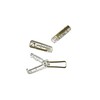 Hulka-Clip
Three Hulka Clips. One is glued to a sort of …
Hulka-Clip
Three Hulka Clips. One is glued to a sort of …
 Hulka Clip red
seven pieces
Hulka Clip red
seven pieces
 Inserter for Hulka Clips
A pistol-like device for inserting Hulka clips. The Australian original …
Inserter for Hulka Clips
A pistol-like device for inserting Hulka clips. The Australian original …
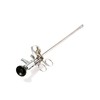 Inserter for the Hulka Clip
Silver inserter with three finger loops. It was the first …
Inserter for the Hulka Clip
Silver inserter with three finger loops. It was the first …
 Material test sample for the Hulka clip
"Elathan 1532"
Material test sample for the Hulka clip
"Elathan 1532"
 No Scalpel Vasectomy
Two scissor-like instruments for performing a vasectomy without a scalpel.
No Scalpel Vasectomy
Two scissor-like instruments for performing a vasectomy without a scalpel.
 Prototype of a Hulka clip
A prototype of a Hulka clip, manufactured in the 1960s. …
Prototype of a Hulka clip
A prototype of a Hulka clip, manufactured in the 1960s. …
 Quinacrine
For non-surgical sterilisation of women
Quinacrine
For non-surgical sterilisation of women
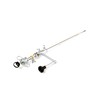 Recent Inserter for Hulka Clips
Silver appliance with three finger eyelets (two aside, one at …
Recent Inserter for Hulka Clips
Silver appliance with three finger eyelets (two aside, one at …
 Slide Viewer
The Slide Viewer from Falope-Ring Systems is a cardboard object …
Slide Viewer
The Slide Viewer from Falope-Ring Systems is a cardboard object …
 Sterilisation technique for men
Experimental prototype
Sterilisation technique for men
Experimental prototype
 Teaching aid for Inserting the Hulka Clip
2 pieces
Teaching aid for Inserting the Hulka Clip
2 pieces
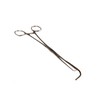 Uterine Manipulator
Scissor-shaped instrument, known as the Uterine Manipulator.
Uterine Manipulator
Scissor-shaped instrument, known as the Uterine Manipulator.
 Uterine Manipulator for TL
With these forceps, one can take hold of the soft …
Uterine Manipulator for TL
With these forceps, one can take hold of the soft …